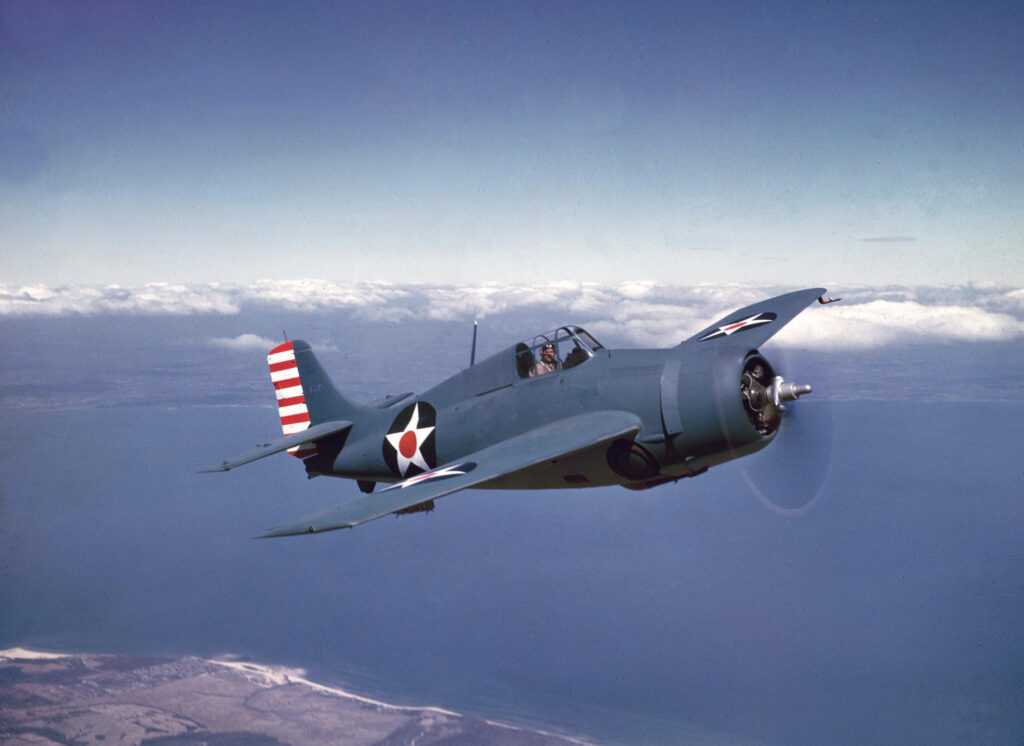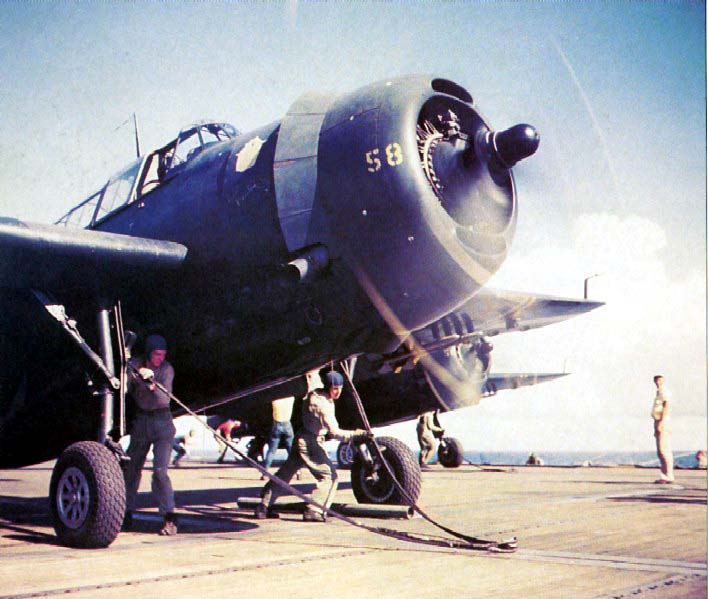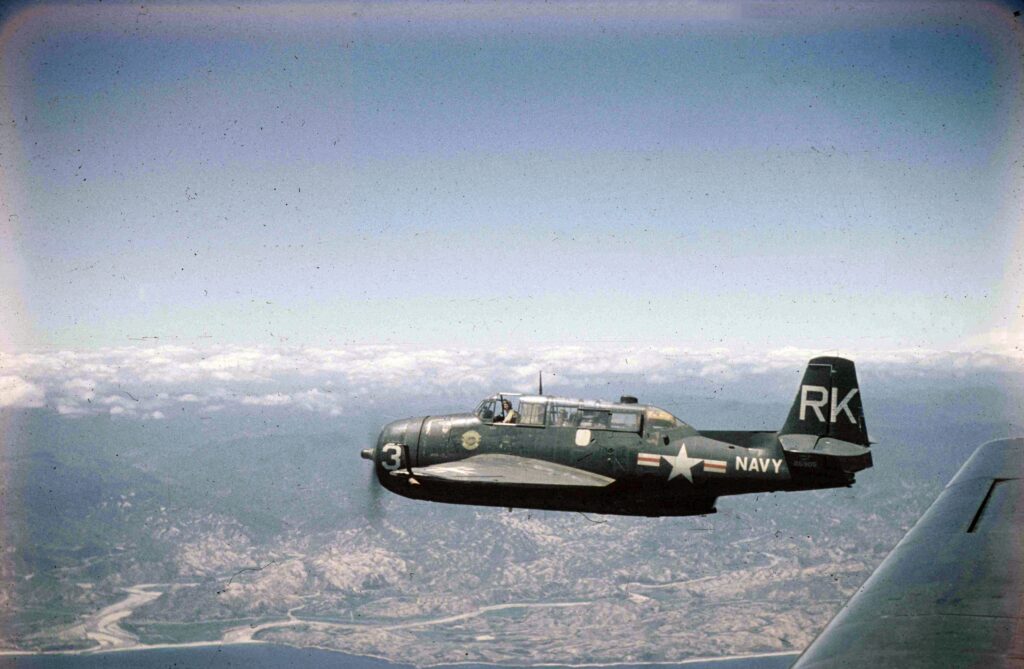Some combat aircraft of World War Two were stunningly beautiful. The sleek Supermarine Spitfire, purposeful De Havilland Mosquito and graceful P-51 Mustang aren’t just gorgeous, they look fast even sitting on the runway. This was not true of the Grumman Avenger.

Not all effective military aircraft look great. The Avenger was the heaviest single-engine aircraft of World War Two – a dumpy, carrier-based torpedo bomber that was said to handle “like a truck” and gained the affectionate but decidedly unglamorous nickname “Turkey” amongst its crews. This ugly torpedo bomber first entered service with the US Navy in 1942.
Despite looking like a barrel with wings, the Avenger proved not just to be effective in combat during World War Two, but more versatile than anyone could have anticipated – highly modified Avengers were still serving long after the war in a number of roles for which they had never originally been designed. This is the story of the rugged, versatile and lethally effective Turkey.
 Due to its shape, the Avenger was nicknamed the ‘Turkey’. Photo credit – Airwolfhound CC BY-SA 2.0.
Due to its shape, the Avenger was nicknamed the ‘Turkey’. Photo credit – Airwolfhound CC BY-SA 2.0.
Origin
The Douglas TBD Devastator torpedo bomber entered service with the US Navy in 1937 and it represented several notable “firsts.” It was the first all-metal monoplane used by the US Navy, the first aircraft with hydraulically folded wings and one of the first USN aircraft with a fully enclosed cockpit.
However, the Devastator had a major problem: it was painfully slow. On paper, it had a top speed of barely 200mph, but when carrying a torpedo or bombs, it couldn’t even get close to that speed.
By the middle of 1939, contemporary fighters were reaching speeds of 350mph and it was clear that the Devastator would be a liability in combat.
Though the TBD had been in service for less than two years, the US Navy began looking for a replacement. In the summer of 1939, the US Navy Bureau of Aeronautics issued a specification calling for design proposals for a new torpedo bomber.
 The SBD Dauntless was only in service for a short period before a replacement was needed.
The SBD Dauntless was only in service for a short period before a replacement was needed.
This was a demanding specification, calling for an aircraft with a top speed of 300mph and a range of 3,000 miles (using auxiliary fuel tanks). The aircraft had to be capable of carrying either a single torpedo or three 500lb bombs in an internal bay.
Just two designs made it beyond the drawing board, one from Vought which became the XTBU-1 Seal Wolf and the other from Grumman. Two prototypes of each were produced for evaluation.
At that time, Grumman had never designed a torpedo bomber, but the US Navy had already placed orders for examples of its new F4F Wildcat fighter, and they liked what they saw.
The F4F was rugged, reliable, and easy to fly and it featured the unique Grumman Sto-Wing system that allowed its wings to be manually folded, saving space in hangers and on flight decks, so the USN were very interested in a Grumman proposal for a torpedo bomber.
 A TBM Avenger with the wings folded back aboard the USS Randolph.
A TBM Avenger with the wings folded back aboard the USS Randolph.
In flight testing, the prototype XTBF-1 proved to be notably faster than Vought’s Sea Wolf and this, combined with the advantage of the Sto-Wing system, led to the Grumman design being selected. In December 1940, the US Navy placed an order for 286 TBF-1s from Grumman.
The TBF/TBM
The TBF-1 bore an obvious family resemblance to the Grumman F4F Wildcat fighter (and its replacement, the Grumman F6F Hellcat). It featured a fat, oval section fuselage and a mid-wing with space for hydraulically retracted gear (a notable improvement over the F4F which was provided with hand-cranked gear).
The three-man crew were housed under a large “greenhouse” style canopy. In addition to the pilot, the TBF carried a radio operator who was also responsible for operating a single M1919 Browning 0.30 in. machine gun on a flexible mount capable of firing from a position below the fuselage.
If the aircraft was carrying bombs, the radio operator also served as the bombardier. In the rear of the cockpit, a rear gunner controlled a single M2 Browning 0.50 in. machine gun housed in an electrically traversed turret.
 Resemblance can be seen between the F4F and the Avenger.
Resemblance can be seen between the F4F and the Avenger.
In early models, the pilot also controlled a single forward-firing 0.30 in. machine gun mounted on the engine cowling, though this was removed on later versions and replaced by a pair of wing-mounted 0.30 in. machine guns.
The TBF was capable of carrying either a single Mark 13 torpedo under the fuselage or either a single 2,000lb bomb or four 500lb bombs in the internal bay.
The TBF was powered by a 1,700hp Wright R-2600-8 Twin Cyclone radial engine but in testing, the TBF never quite achieved the top speed required in the USN specification.
It was capable of around 280mph, less than the specified 300mph but still substantially faster than the Devastator it was intended to replace. The combat range was found to be around 1,000 miles, giving the TBF-1 great flexibility in carrier operations.
 The Avenger was introduced into service in late 1941.
The Avenger was introduced into service in late 1941.
In December 1941, Grumman held a small ceremony to open a new plant and to reveal the TBF to the public for the first time.
However, the date selected became infamous for other reasons: on the same day, 7th December 1941, Japanese aircraft attacked the US Pacific Fleet at Pearl Harbor and America found itself directly involved in World War Two.
Production of the TBF was immediately ramped up and the new aircraft was given a name directly associated with the attack on Pearl Harbor: Avenger.
The USN needed the new aircraft in large numbers and as quickly as possible. The first operational TBFs were delivered in January 1942 and by June, Grumman was producing 60 each month. By November, 100 were leaving the Grumman plant each month and during 1942, production exceeded 150 per month.
This still wasn’t enough to meet the needs of the expanding US Navy air arm, and during 1943 Grumman was increasingly involved in the production of the F6F Hellcat fighter.
 TBM Avengers and SB2C Helldivers dropping bombs.
TBM Avengers and SB2C Helldivers dropping bombs.
In response, the US Navy awarded a production contract to the Eastern Aircraft Division of General Motors to produce the Avenger in 1942.
GM would go on to produce more than 75% of the total of almost 10,000 Avengers produced during World War Two and the aircraft they produced were designated TBM.
In Service
From the middle of 1942, the TBF/TBM was the only torpedo bomber used by the US Navy, serving on every American aircraft carrier in service after that date.
A handful of TBF-1s took part in the Battle of Midway in June 1942, though these had not arrived in time to be operated from carriers and instead were based at the airfield on Midway Island.
Like the Devastators used in the same battle, these aircraft fared badly (all were either shot down or damaged so badly that they were written off) but two months later, TBFs operating from the carriers Saratoga and Enterprise sank the Japanese light aircraft carrier Ryūjō during the battle for the Eastern Solomon islands.
During the war in the Pacific, Avengers would drop more ordnance than any other USN aircraft and would prove to be rugged and reliable, able to return to base despite staggering amounts of combat damage.
 A TBF Avenger about to be launched from an aircraft carrier.
A TBF Avenger about to be launched from an aircraft carrier.
However, the Avenger didn’t just serve in the Pacific. In its role as a glide bomber, the TBF/TBM proved to be lethally effective as a submarine killer.
In the Atlantic, the USN and Royal Navy were engaged in an ongoing campaign against German U-Boats and, when escort carriers were introduced in that theatre, Avengers provided a potent anti-submarine force.
In total, the Avenger would be credited with destroying more than 30 enemy submarines during World War Two.
During its long career, the Avenger went through relatively few major upgrades, a testament to sound basic design.
The TBF-1C provided an additional fuel tank range that effectively doubled the aircraft’s operational range and the TBM-3, produced from mid-1944, saw the addition of a more powerful engine and under-wing hardpoints for the carriage of rockets or additional fuel tanks.
But even by the time the war ended, most Avengers in service were the original TBF-1/1C version. The Avenger continued to be used by the USN after the end of the war, and a few were still serving in specialised roles during the Korean War (1950 – 1953).
 The Fleet Air Arm’s anti-submarine avenger. Photo credit – RuthAS CC BY 3.0.
The Fleet Air Arm’s anti-submarine avenger. Photo credit – RuthAS CC BY 3.0.
During World War Two, the Avenger also served both with the Royal New Zealand Air Force and extensively with the Fleet Air Arm of the British Royal Navy from late 1943.
Most of the Royal Navy Avengers were scrapped after the end of World War Two, but this aircraft enjoyed a new lease of life with the Fleet Air Arm from the mid-1950s when it was adapted for anti-submarine operations (as the AS.4/5) and for electronic surveillance and countermeasures (as the ECM.6).
Post-war, Avengers were also used by the Royal Canadian Navy which modified this aircraft for anti-submarine and electronic surveillance duties.
In a notable piece of irony, when the Japanese Air Self-Defence Force was created in 1954, the first operational aircraft it used was the TBM, the same aircraft that had done so much to ensure the defeat of Japan during the war.
However, it was in civilian use that large numbers of surplus Avengers were used for many years after the Second World War. This aircraft was used as a crop duster and, more widely, as a fire-fighting aircraft.
 A flight of TBM Avengers in January 1945.
A flight of TBM Avengers in January 1945.
A Canadian firefighting company, Forest Protection Limited (FPL) used modified Avengers as water bombers and spray aircraft and in the 1970s, was operating a fleet of over forty Avengers. The last FPL TBM wasn’t finally retired from active fire-fighting duties until 2012!
Conclusion
Turkey was one of those rare combat aircraft that got everything right, the first time. It was tough, dependable, and easy to fly and it was capable of absorbing remarkable levels of combat damage and still returning safely to base.
The upgrades during its long service life were relatively minor, and its large fuselage made it ideal for its later transformation into an effective anti-submarine platform, ECM aircraft and even a civilian fire-fighter.
 A TBM-3W with an early radar pod underneath.
A TBM-3W with an early radar pod underneath.
There was nothing remarkable about the performance of the TBF/TBM, though some later models had a remarkable combat range. But it was fast enough and tough enough to do the job for which it was originally designed.
It may lack the glamour and excitement of some other aircraft of World War Two, but the dependable Avenger did all that was required of it and deserves a place in any list of the great combat aircraft of the Second World War.
As a footnote, a couple of rather famous people flew in Avengers during World War Two. A young man named George W.
Bush became the youngest naval aviator when he was commissioned in the USN in the summer of 1943.
He later survived being shot down in a TBM over the Pacific island of Chichi Jima and would go on to become the 43rd President of the United States.
 Avengers were used in Korea.
Avengers were used in Korea.
Another young man joined the US Navy during the war, hoping to become a naval aviator. He was rejected for pilot training because of colour blindness and served instead as a rear-gunner in the TBM.
After the war, that young man, Paul Newman, decided to pursue a career in acting and became internationally famous for his roles in a string of blockbuster movies.
He later said that he had drawn on his experiences serving in the Avengers when he needed to find an “emotional trigger” for some of the characters he played so successfully.





